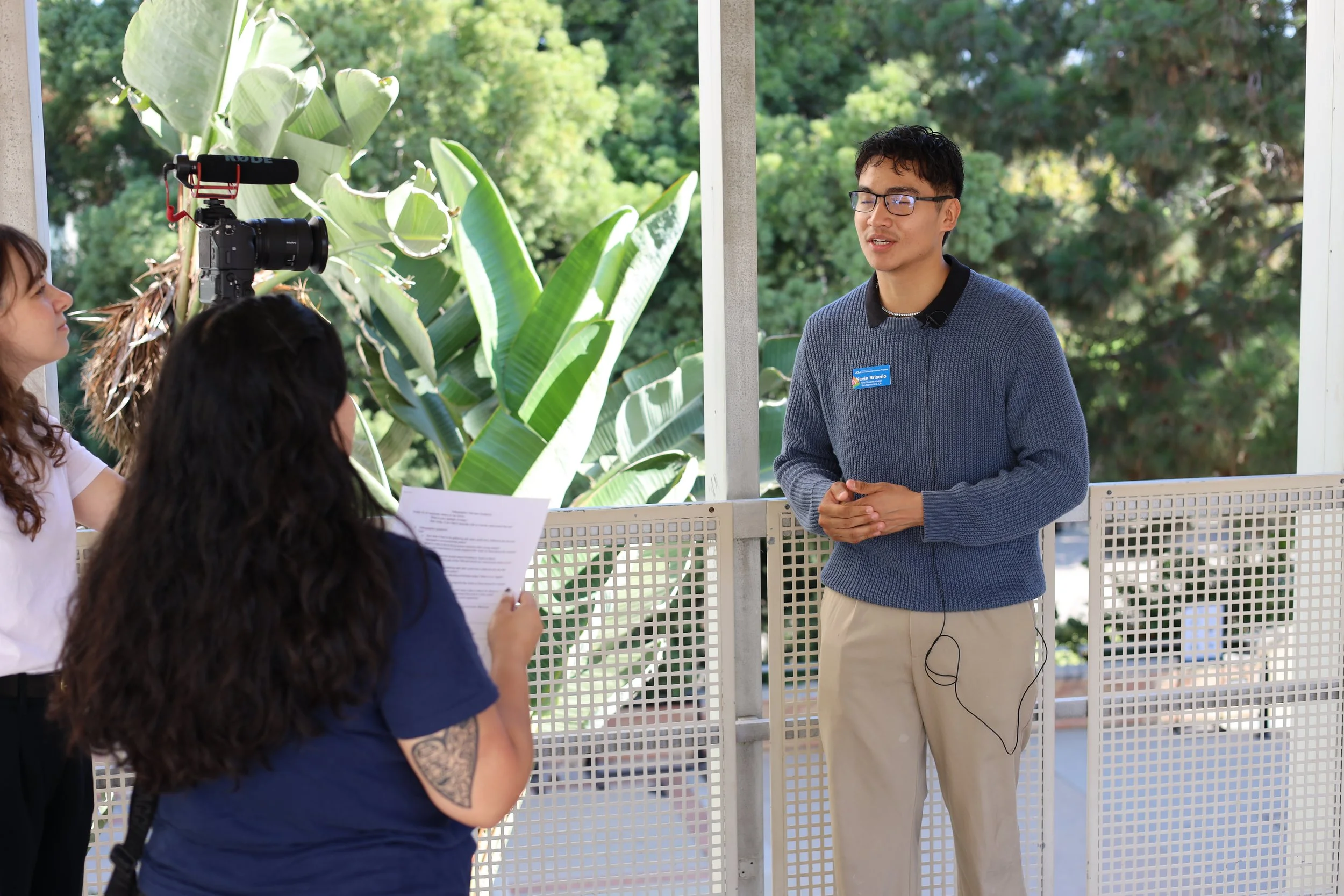WHAT WE DO
Youth are uniquely positioned to advocate for the environmental issues they experience. Frontline youths’ lived experience with environmental racism is central to their environmental justice expertise, making them the ideal organizers to solve the environmental crisis—they simply need the resources to succeed.
This is where Youth on Root steps in.
Youth on Root provides a wraparound support to youth organizers from frontline environmental justice communities in California. We equip frontline youth with tools, resources, and a network of support to elevate their leadership as organizers, storytellers, and policy advocates in the Environmental Justice Movement. Through leadership development and coalition building, we create spaces where youth shape the movement, not just participate in it. We foster intergenerational learning, ensuring that youth are mentored while enacting an 'each-one-teach-one' model of movement building in their own communities. Platforms such as our Seeds of Change Summit, digital media, and publication of their successes in our EJ curriculum amplify youth voices and their impact, shifting the narrative on who the experts of the environment are.
Youth Power Convenings – Regional and statewide events like our Seeds of Change Summit,
where youth take center stage as presenters, panelists, and speakers.
Environmental Justice Curriculum – Intersectional educational resources created by and for
frontline youth of color from California.
In-Person Workshops – School and community workshops facilitated and led by youth
leaders such as our Youth Advisory Board members.
Frontline Youth Organizer Collaborative Network – Building connections between local
youth organizers across regions for collective action across the state.
Key Focus Areas:
WHY WE DO IT
Black, Indigenous, and People of Color (BIPOC) disproportionately experience environmental harm, with low-income youth of color bearing the most severe consequences of the environmental disaster. Compared to their peers, frontline youth grow up with less access to green space, fresh groceries, safe housing, clean water, accessible transportation, and more. Frontline youth are more likely to live in neighborhoods with poor air quality, lead and asbestos in their schools, or in close proximity to toxic waste sites and oil wells or refineries. Because of this, they experience far higher rates of asthma and exposure to carcinogens, leaving them with preventable chronic illnesses from as early as birth.
Youth from communities on the frontlines of environmental justice often lack access to the education and resources needed to address these challenges or participate in the growing grassroots Environmental Justice Movement. Many organizations working on environmental justice face challenges in reaching youth or providing programming tailored to youth advocacy. Without shifting resources and attention to frontline youth organizers, the environmental field as a whole risks losing critical opportunities for transformative change.
We believe that youth are not just the leaders of tomorrow—they are the leaders of today. By supporting and empowering youth, we ensure the environmental justice movement remains innovative, impactful, and inclusive.
WHO WE SERVE
While we welcome all youth, our primary focus is on:
High School Youth: At an age of social and emotional receptivity, they can build a foundation for advocacy by exploring environmental justice issues in their communities.
Registered College Student Groups: Supporting student organizations at California colleges.
BIPOC and Low-Income Youth Ages 16-25: Amplifying the voices of those underrepresented in the environmental movement.
California Communities: Specifically those disproportionately affected by pollution and environmental injustices.



